
The Culture of Italy to some can be defined alone by it's ancient and modern forms of art and architecture. From the Italian Renaissance to the present, Italy has been known for artists such as Michelangelo Buonarroti, Raphael, Botticelli and Leonardo Da Vinci. Their famous Architecture such as the Laurentian Library, the Tempietto di San Pietro in Montorio, and Reims Cathedral are examples of Italy's great architectural achievements. The ancient cultural geography of Italy can be seen in their paintings, monuments and other historical buildings. Like many other cultures the physical environment and spiritual beliefs have contributed a tremendous influence on the work these artists have created as well as additional factors. A very big factor for Italy was the Italian Renaissance. “The Renaissance, or "rebirth" in Italy began in the late 14th century and lasted until the early 16th century. Many ancient ideas were rediscovered in areas such as philosophy, literature, and science and the evolution of empirical methods of study in these fields. People became increasingly aware of classical knowledge and therefore resolved to learn by direct observation and study of the natural world”(think quest article). The physical environment helped these artists create works of art that have continued to astound the generations of today's world. It seems that every generations tries to capture the social culture of it’s time, this can be compared to popular culture for us. These famous painting, sculptures and architect can be compared to our modern day billboards, magazines and architect as well.
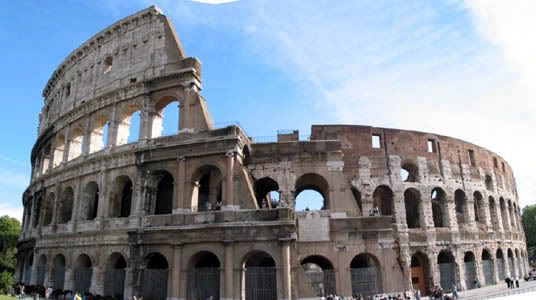 The Colosseum is located in the center of Rome Italy. Built in 70-72 AD under the emperor Vespasian.
The Colosseum is located in the center of Rome Italy. Built in 70-72 AD under the emperor Vespasian.
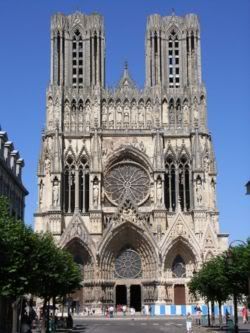 Through visual arts you can see the folk culture in many paintings as well as folk architecture. Although some artists used folk culture other also tried to create new types of architecture such as depth and buildings with less ornament. In Leonardo Da Vinci's last supper he depicts a scene from the last supper god had with his disciples before he was betrayed. The painting has been so highly popular because of the emotion and religious beliefs behind it. Painters from the era were able to capture the social, political and environmental issues that were important to them.
“The art of the High Renaissance, favored a general, unified effect of painting or architectural composition”. Italian artists looked to capture the beauty of their environment and everyday lives. The idea of “realness” in their painting was an object they strived to achieve.
Botticelli was an architect as well a painter who is famous for creating “The Birth of Venus” and “The adoration of Magi”.Some other famous structures in Italy include...
Through visual arts you can see the folk culture in many paintings as well as folk architecture. Although some artists used folk culture other also tried to create new types of architecture such as depth and buildings with less ornament. In Leonardo Da Vinci's last supper he depicts a scene from the last supper god had with his disciples before he was betrayed. The painting has been so highly popular because of the emotion and religious beliefs behind it. Painters from the era were able to capture the social, political and environmental issues that were important to them.
“The art of the High Renaissance, favored a general, unified effect of painting or architectural composition”. Italian artists looked to capture the beauty of their environment and everyday lives. The idea of “realness” in their painting was an object they strived to achieve.
Botticelli was an architect as well a painter who is famous for creating “The Birth of Venus” and “The adoration of Magi”.Some other famous structures in Italy include...
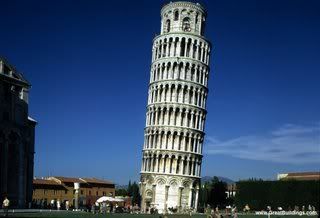 The Leaning Tower of Pisa by unknown at Pisa, Italy built 1063 to 1350.
The Leaning Tower of Pisa by unknown at Pisa, Italy built 1063 to 1350.
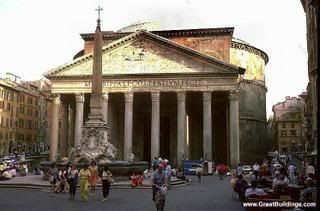
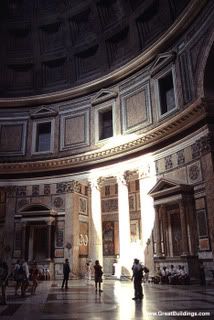
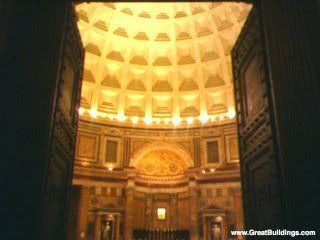 Exterior and Interior views of the Pantheon in Rome Italy by an unknown architect in 118 to 126 AD.
It was built as a Roman temple and later consecrated as a Catholic Church.
Exterior and Interior views of the Pantheon in Rome Italy by an unknown architect in 118 to 126 AD.
It was built as a Roman temple and later consecrated as a Catholic Church.
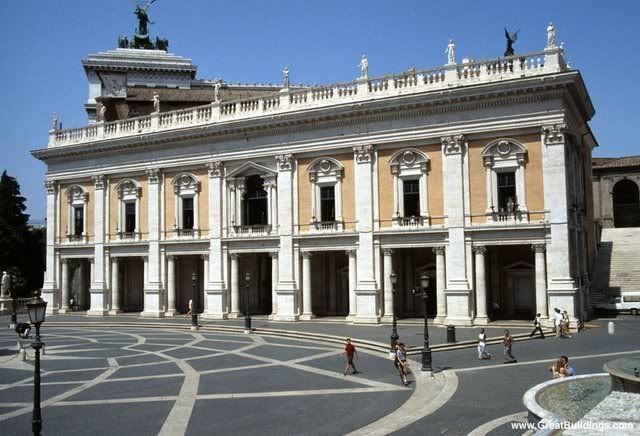
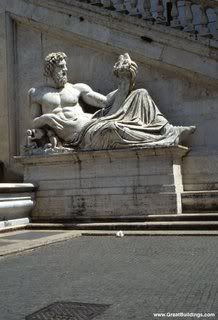
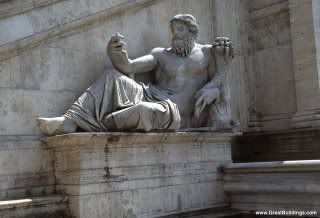 The Piazza del Campidoglio was constructed by The famous Michelangelo in 1538 to 1650 in Rome Italy. "A few years after he arrived in Rome, Pope Paul III (Farnese) decided to reshape the Capitoline Hill into a monumental civic piazza; Michelangelo designed the project and his Piazza del Campidoglio is one of the most significant contributions ever made in the history of urban planning. The hill's importance as a sacred site in antiquity had been largely forgotten due to its medieval transformation into the seat of the secular government and headquarters for the Roman guilds, and it was in forlorn condition when Michelangelo took charge of reorganizing it as a dynamic new center of Roman political life. The project went forward in slow stages with many interruptions; little was built before his death in 1564. It was begun in 1538 and was not completed until the seventeenth century, but Michelangelo's original design is preserved in engravings from the 1560s by étienne Dup¸rac."
The Piazza del Campidoglio was constructed by The famous Michelangelo in 1538 to 1650 in Rome Italy. "A few years after he arrived in Rome, Pope Paul III (Farnese) decided to reshape the Capitoline Hill into a monumental civic piazza; Michelangelo designed the project and his Piazza del Campidoglio is one of the most significant contributions ever made in the history of urban planning. The hill's importance as a sacred site in antiquity had been largely forgotten due to its medieval transformation into the seat of the secular government and headquarters for the Roman guilds, and it was in forlorn condition when Michelangelo took charge of reorganizing it as a dynamic new center of Roman political life. The project went forward in slow stages with many interruptions; little was built before his death in 1564. It was begun in 1538 and was not completed until the seventeenth century, but Michelangelo's original design is preserved in engravings from the 1560s by étienne Dup¸rac."
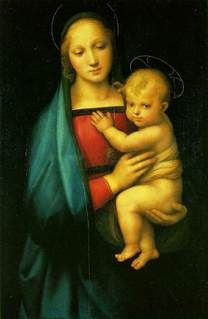
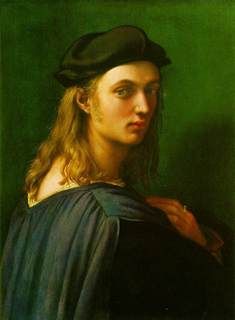 Here are some portrait picture created by Raphael during the Italian Renaissance. He was best known for his Madonnas and for his large figure compositions in the Vatican in Rome.
Here are some portrait picture created by Raphael during the Italian Renaissance. He was best known for his Madonnas and for his large figure compositions in the Vatican in Rome.
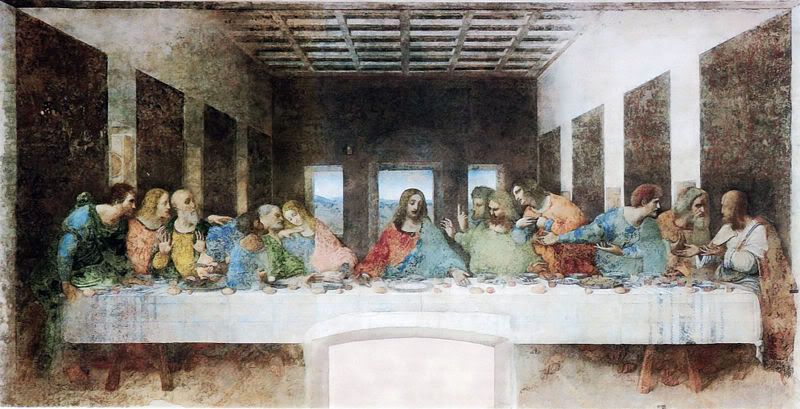
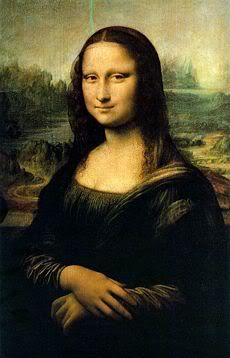 Leonardo Da Vinci could easily be one of the most controversial artists of his time. Up until this day his works still holds controversial conversations among scholars. Above are his famous paintings of "The Last Supper" and the "Mona Lisa".
The painting was not well-known until the mid-19th century, when artists of the emerging Symbolist movement began to appreciate it, and associated it with their ideas about feminine mystique. Critic Walter Pater, in his 1867 essay on Leonardo, expressed this view by describing the figure in the painting as a kind of mythic embodiment of eternal femininity, who is "older than the rocks among which she sits" and who "has been dead many times and learned the secrets of the grave."
For my virtual fieldtrip report I visited a tour on the Italian art and Artists of the Italian Renaissance. In learning about the Italian Renaissance it was difficult at first but after researching more I was able to find out that the time period and things that were happening during that time period had a great impact on how the Artists achieved their success. Like many works of art, these artists simply were trying to achieve a point of view or sense of place with their portraits of architect. It is not hard to look at a great piece of Italy’s famous buildings, or even the real thing and know that it is authentic and holds significance to it’s heritage. Or to see a painting and not feel the emotion thorough the face on the canvas. My experience in viewing a portrait like the Mona Lisa I gathered my own perception of her life. I imagined this must have been the portrait of a very beautiful woman of this era for him to paint her so delicately. At looking at “The Last Supper” it is obvious that religion was a topic that was not taboo or even possibly an aspect of popular culture of this time period. Through additional paintings you can view the cultural landscapes of Italy and when building cathedrals of structures sometime architects would build specifically facing the horizon or countryside intentionally to add to the fine points.
Overall the artists of the Italian Renaissance were able to capture the culture, social, economic and political views in Italy of their times. Through their paintings and structures we are able to define the classes and differences between high class and lower class which is an example of Elitist Landscapes. We can see the way they viewed their culture and still to this day we are able to appreciate all of these works.
Leonardo Da Vinci could easily be one of the most controversial artists of his time. Up until this day his works still holds controversial conversations among scholars. Above are his famous paintings of "The Last Supper" and the "Mona Lisa".
The painting was not well-known until the mid-19th century, when artists of the emerging Symbolist movement began to appreciate it, and associated it with their ideas about feminine mystique. Critic Walter Pater, in his 1867 essay on Leonardo, expressed this view by describing the figure in the painting as a kind of mythic embodiment of eternal femininity, who is "older than the rocks among which she sits" and who "has been dead many times and learned the secrets of the grave."
For my virtual fieldtrip report I visited a tour on the Italian art and Artists of the Italian Renaissance. In learning about the Italian Renaissance it was difficult at first but after researching more I was able to find out that the time period and things that were happening during that time period had a great impact on how the Artists achieved their success. Like many works of art, these artists simply were trying to achieve a point of view or sense of place with their portraits of architect. It is not hard to look at a great piece of Italy’s famous buildings, or even the real thing and know that it is authentic and holds significance to it’s heritage. Or to see a painting and not feel the emotion thorough the face on the canvas. My experience in viewing a portrait like the Mona Lisa I gathered my own perception of her life. I imagined this must have been the portrait of a very beautiful woman of this era for him to paint her so delicately. At looking at “The Last Supper” it is obvious that religion was a topic that was not taboo or even possibly an aspect of popular culture of this time period. Through additional paintings you can view the cultural landscapes of Italy and when building cathedrals of structures sometime architects would build specifically facing the horizon or countryside intentionally to add to the fine points.
Overall the artists of the Italian Renaissance were able to capture the culture, social, economic and political views in Italy of their times. Through their paintings and structures we are able to define the classes and differences between high class and lower class which is an example of Elitist Landscapes. We can see the way they viewed their culture and still to this day we are able to appreciate all of these works.
Sources
My Virtual Tour
Additional Architecture of Italy
Additional Arts of The Italian Renaissance